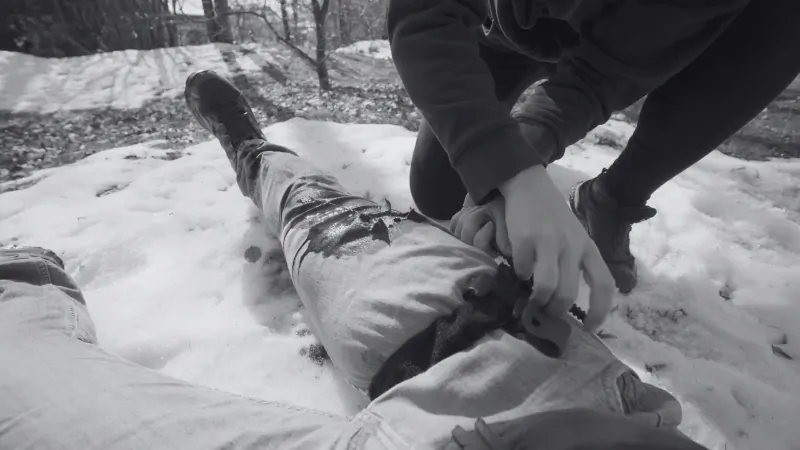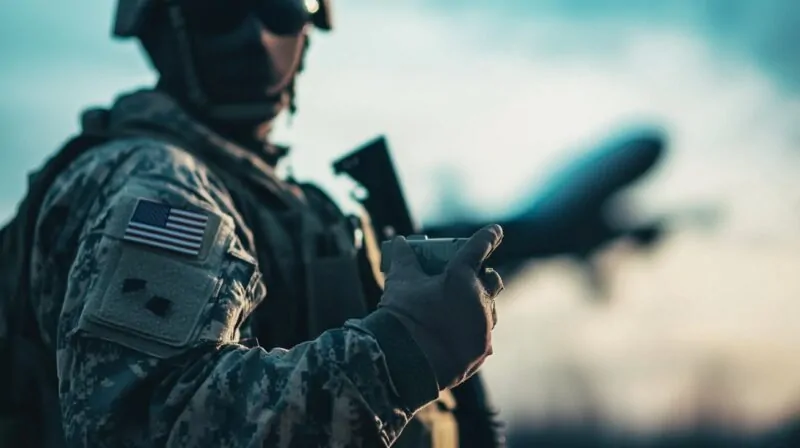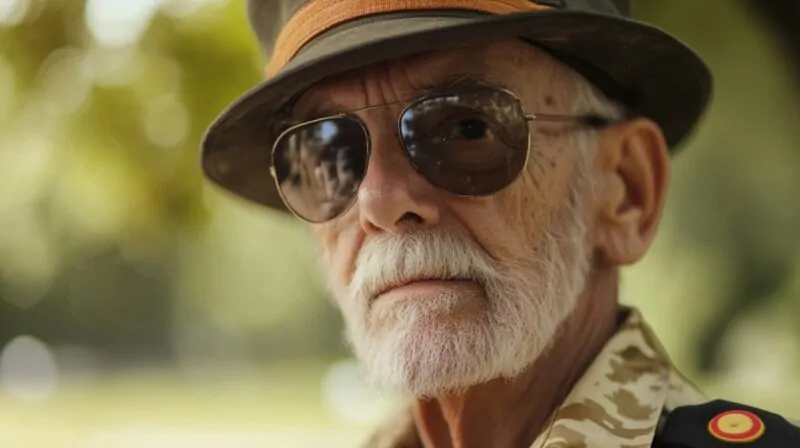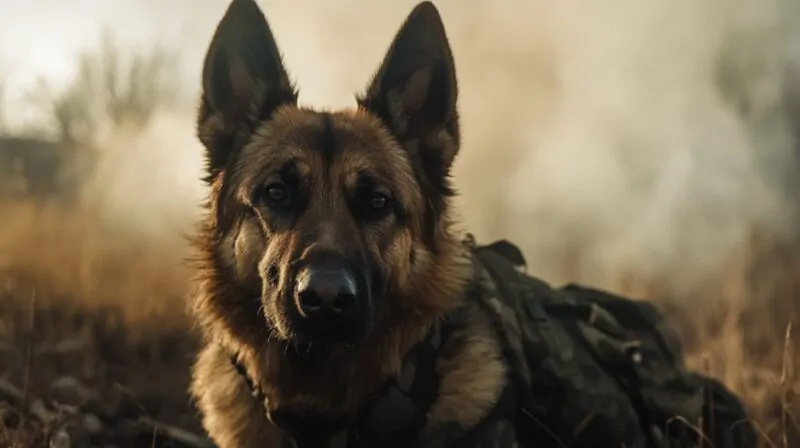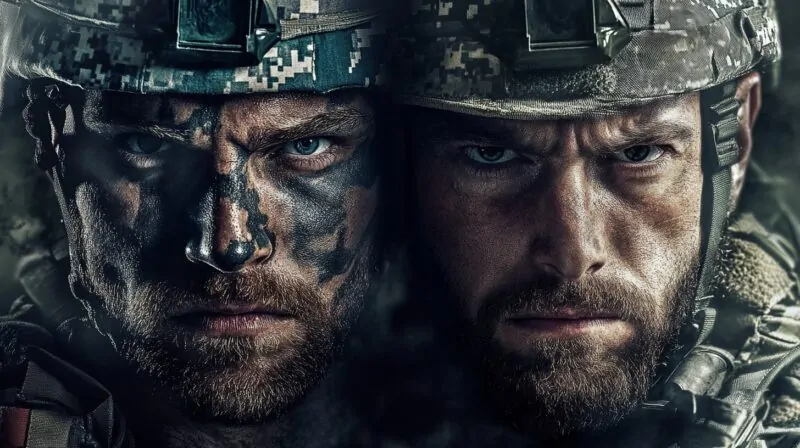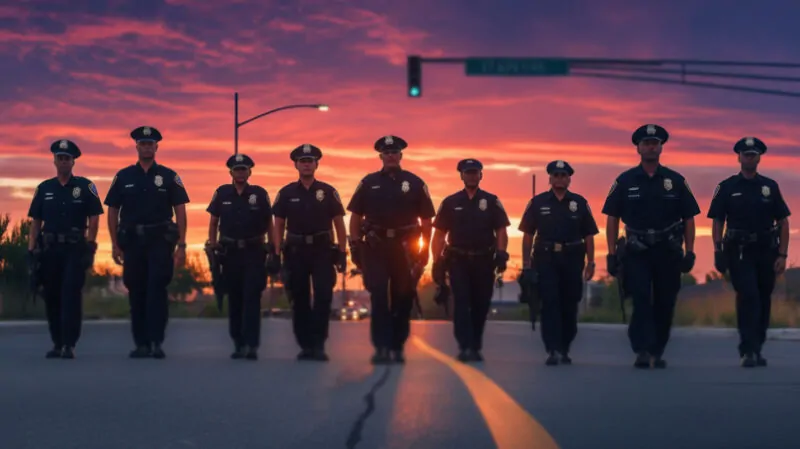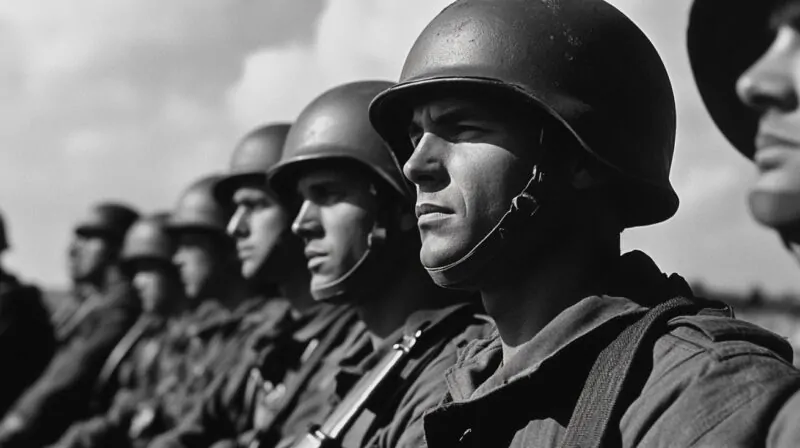If someone is shot, they need immediate medical attention. After reaching safety and calling emergency services, you can help slow the bleeding by applying direct pressure until help arrives.gu
Gunshot wounds are always serious, and the severity depends on factors like where the person was hit, the type of gun, and the size of the bullets.
Gun-related injuries are common in the U.S according to Healthline. In 2020, the CDC reported 45,222 firearm deaths, with over 40% being homicides.
If someone is shot, call 911 or emergency services right away. Giving first aid quickly can control bleeding and potentially save their life.
First Aid for Gunshot Wounds
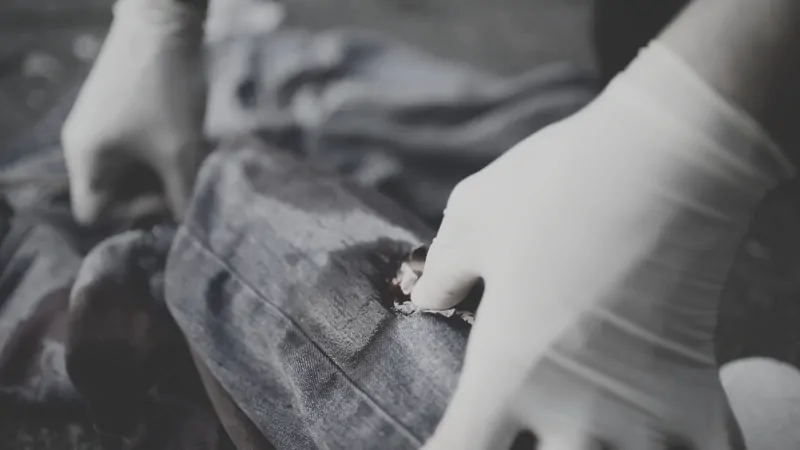
More people survive gunshot wounds than die from them, according to the CDC. If someone is shot, it’s important to locate where the injury is and start first aid immediately while waiting for emergency services.
The first 10 minutes after a gunshot wound are critical, often called the “platinum 10 minutes.” During this time, the injured person is at high risk for serious complications, such as:
- Airway obstruction
- Collapsed lung (tension pneumothorax)
- Severe bleeding
According to 2017 research, bleeding is the leading cause of death from gunshot wounds.
The American Red Cross states that severe bleeding can be fatal within 5 minutes if not treated.
What to Do While Waiting for an Ambulance
The faster a gunshot victim receives medical attention, the better their chances of survival. Ideally, they should get care within the first 10 minutes after being shot.
Here’s what you can do while waiting for help:
- Check for responsiveness: Use the “tap-shout-tap” method. Speak to the person (“Are you okay?” or “Can you hear me?”), tap their body firmly, then repeat the verbal cue.
- Time the response check: The Red Cross recommends assessing responsiveness for no longer than 10 seconds.
- If unresponsive: If the person isn’t responding and isn’t breathing, perform CPR immediately. If an automated external defibrillator (AED) is available, use it according to the device’s instructions.
How to Manage Bleeding from a Gunshot Wound
Bleeding is the leading cause of death in gunshot victims. If someone is bleeding heavily, it’s critical to act fast by applying firm pressure to the wound.
First, cover the wound with any clean cloth you have available, like a shirt or piece of clothing, and press down hard. Keep the pressure constant until emergency medical responders arrive. This will help slow down the bleeding and prevent further blood loss.
In cases where the wound is large or bleeding severely from an arm or leg, you may need to use a tourniquet. Tourniquets are especially useful when direct pressure isn’t enough to stop the blood flow.
Research has shown that commercially made tourniquets are highly effective in controlling bleeding from limbs, reducing the need for blood transfusions, and improving the chances of survival. These tourniquets are readily available for purchase and can be added to emergency kits for preparedness.
It’s important to understand why soldiers take risks, as these behaviors can sometimes result in dangerous situations where fast and efficient medical care is critical.
If a commercial tourniquet is not available, you can improvise one using fabric like a shirt or necktie. Tie the fabric several inches above the wound as tightly as possible to reduce blood flow to the area. Although a homemade tourniquet may not be as effective as a commercial one, it can still make a significant difference in controlling bleeding in an emergency.
Having a trauma kit readily available can make a critical difference in saving a life during an emergency, providing essential tools to control bleeding and stabilize injuries until professional help arrives, so to find the best Gunshot Trauma Kit, click here.
How Will They Be Treated In Hospital?
Once the injured person arrives at the hospital, medical staff will assess the wound and decide on the necessary treatment based on the location and severity of the injury, as well as the patient’s overall health.
Treatment for a gunshot wound may involve:
- Surgery to remove the bullet and repair any damaged internal structures.
- Intravenous (IV) fluids to administer antibiotics, medications, and fluids.
- Blood transfusions to replace lost blood.
- Sedation or painkillers to manage pain and discomfort.
Common Injured Areas
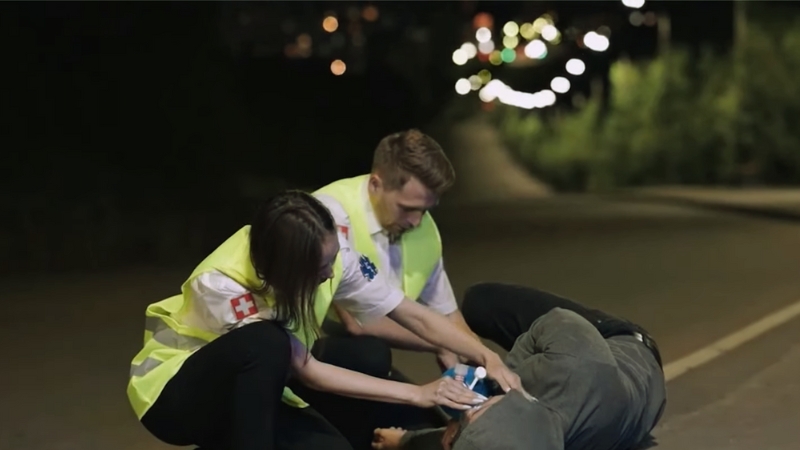
According to research, the most commonly injured areas in gunshot cases in the U.S. are the legs, feet, hands, and arms.
From 2010 to 2012, unintentional injuries and assault-related injuries occurred most often in the following body parts:
- Legs and feet: 43% of unintentional injuries, 35% of assault injuries.
- Hands or arms: 34% of unintentional injuries, 15% of assault injuries.
- Upper trunk: 6% of unintentional injuries, 20% of assault injuries.
- Lower trunk: 7% of unintentional injuries, 19% of assault injuries.
- Head or neck: 10% of unintentional injuries, 11% of assault injuries.
Abdominal Gunshot Wounds
In cases where the abdomen is involved, 2022 research shows that the most commonly affected organs are:
- Small intestines (50%)
- Large intestines (40%)
- Liver (40%)
- Intrabdominal blood vessels (30%)
Long-Term Complications
For every firearm-related death in North America, there are about three individuals who survive but suffer disabling injuries. Gunshot survivors can face a range of long-term physical and psychological challenges, including:
- Physical disabilities
- Memory problems
- Emotional disturbances
- Post-traumatic stress disorder (PTSD)
The specific complications depend on the location and extent of the injury. For example, a gunshot wound to the head may lead to symptoms such as:
- Headaches
- Sensitivity to light and noise
- Confusion
- Memory issues
- Problems with balance and motor coordination
Infection is a serious potential complication, either from the wound itself or from surgery. To reduce the risk, it’s essential to follow your doctor’s instructions carefully and take medications as prescribed.
In some cases, if a limb is too damaged, amputation may be necessary. If the spinal cord is injured, partial or complete paralysis can occur. Even when organs are saved, damage from gunshot wounds can lead to significant long-term health problems.
Recovery After
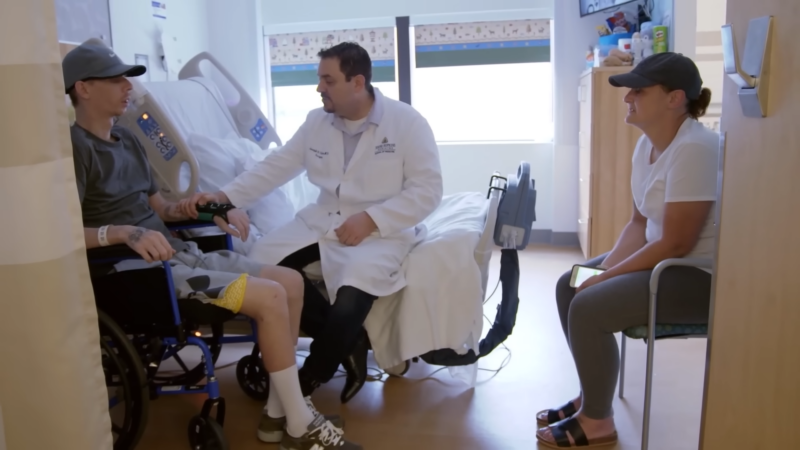
The recovery process varies widely depending on the severity of the injury. Some people with minor wounds may heal in a few weeks, while others may face lifelong disabilities.
Physical recovery may involve:
- Physical therapy to regain strength and mobility
- Pain management with medications
- Treatment for complications related to the injury
- Time off from work or school to focus on healing
Surviving or witnessing a shooting is a traumatic experience. Recovery often requires not just physical healing but emotional and mental support as well. Survivors commonly deal with anxiety, panic attacks, and depression.
Therapy can be an essential part of recovery, helping survivors process their emotions and develop coping strategies. Support groups also offer a safe space to connect with others who have experienced gun violence and work toward healing together.
In cases of severe or complex injuries, survivors may need a dedicated team of healthcare professionals, including doctors, surgeons, military nurses, and physical therapists, to support their recovery.
Bottom Line
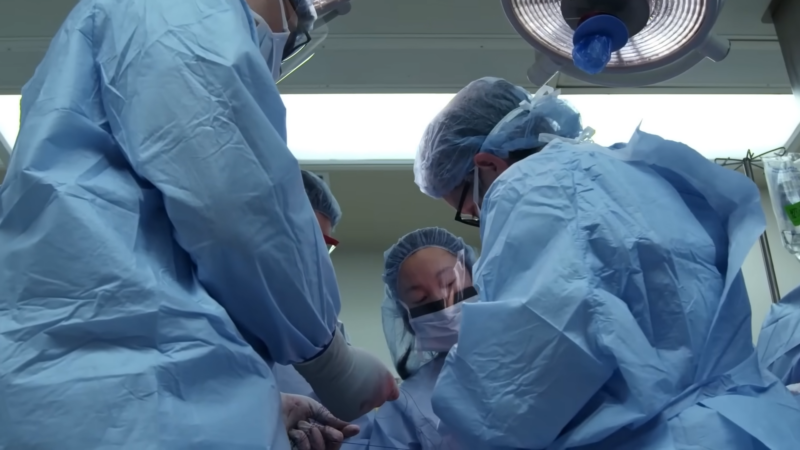
Gunshot wounds require immediate medical attention. First aid begins with getting the injured person to safety and calling 911 or local emergency services. While waiting for help, check if the person is responsive and apply pressure to control bleeding with a clean cloth.
If bleeding is severe from a limb, use a commercial or improvised tourniquet. CPR or an automated external defibrillator may be needed in some cases.
In situations involving gunfire, wearing body armor can significantly reduce the severity of injuries and improve survival chances.
Treatment often involves surgery and may require a hospital stay ranging from days to weeks. Recovery can also include medication, physical therapy, and possibly additional surgeries. Alongside physical healing, addressing emotional and psychological trauma, such as PTSD or anxiety, is crucial for both survivors and witnesses.
The recovery process varies based on the severity and location of the injury, and the healthcare team will tailor a specific plan to guide each stage of recovery.
Related Posts:
- Is Ibiza Safe in 2025? What You Need to Know Before You Go
- Can You Join the Army with Scoliosis? What You Need…
- The Hidden Rules of Military Life - What They Don’t…
- Is VA Disability Taxable Income? Here's What You…
- Everything You Need to Know About Military Mental…
- Military Base Camp Rules and Regulations - What You…

